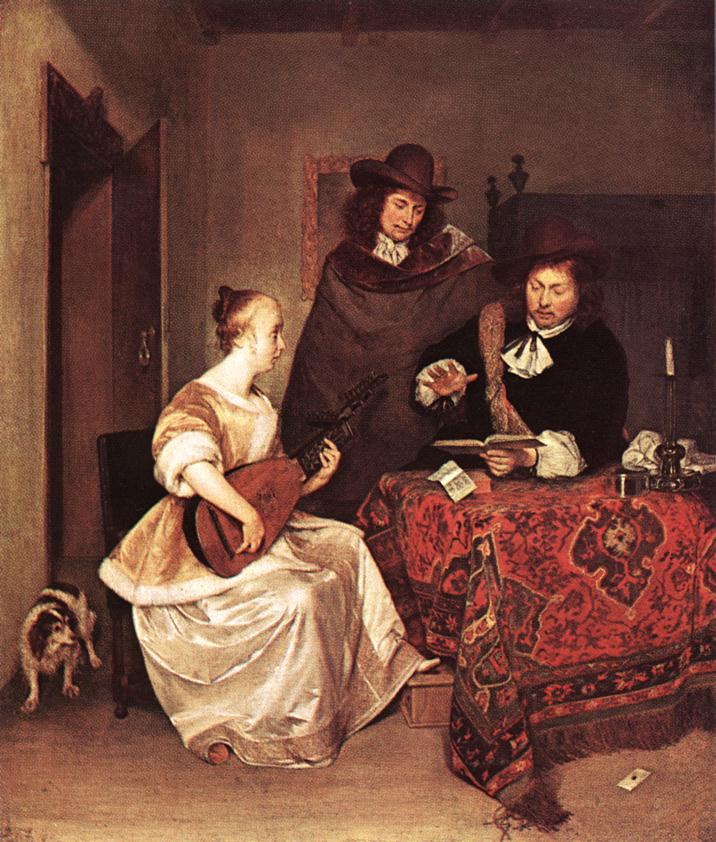
Historical
Oriental Rugs & Carpets
in Medieval European Paintings
Main Page
|
|
A Young Woman Playing a
Theorbo to Two Men
1667-68
Oil on canvas, 68 x 58 cm
National Gallery, London
by Gerard Terborch (b.1617 in Zwolle – d. 1681 in Deventer), Dutch subject
painter, was born in the province of Overijssel, the Netherlands.

Several versions are known of the aristocratic interior by the artist.
Many artists have painted beautiful satins and silks , but no one has ever depicted satin more exquisitely than the much-travelled Dutchman Gerard ter Borch. First trained by his father Gerard ter Borch the Elder, who had lived in Italy in his youth, the precocious young painter worked in Amsterdam and Haarlem before venturing to Germany, Italy, England, France and Spain. In 1646 he went to Münster, where he witnessed the ratification of the treaty of 1648 signalling the triumphant end of the Dutch wars of independence from Spain. In 1654, he married and settled down, permanently, in Deventer.
Whether miniature full-length portraits, or scenes of - supposedly - everyday life, ter Borch's pictures are distinguished by technical and psychological refinement. It seems curious, therefore, that he first specialised in guardroom subjects - although he brings even to the rowdy theme of garrisoned soldiers an element of stillness and reflection. His best-known paintings, however, represent elegant interiors with only a few figures, one of them usually a young woman in ravishing pale satin. Here, in an old-ivory bodice trimmed with fur and a white skirt setting off her fair hair, her shoe propped against a foot warmer, she plays the theorbo, an early form of lute, accompanying the man holding a song book. A man in a cloak looks on, and a spaniel seems to listen. Behind them is a curtained bed. Under the red Turkish Ushak carpet covering the table lies a single playing card, the ill-omened ace of spades.
The woman and the singing man each appear in other paintings by the artist, as do the silver box and candlestick - this is 'selective' naturalism, a scene composed from the imagination with ingredients assembled from drawings and studio props. In Dutch paintings of this type music-making is usually suggestive of love, while playing cards may be emblems of improvidence, and dogs and footwarmers can signify base desires. Yet it would be foolhardy to read this subtle painting, with its subdued tonality, as a scene of the demi-monde. We can never know what the relationships of these three figures are, and their thoughts and feelings, so delicately implied, are infinitely ambiguous. That, surely, was the artist's intention: to evoke imperfectly understood events, tantalising in their suggestion of mutability and transience.